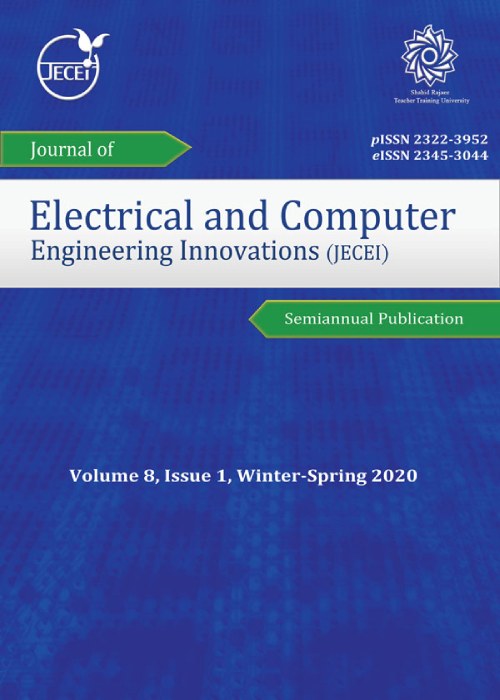Voltage Control of Flexible-Joint Robot Manipulators using Singular Perturbation Technique for Model Order Reduction
Author(s):
Article Type:
Research/Original Article (دارای رتبه معتبر)
Abstract:
Background and Objectives
Robot manipulator with flexible-joints is very complex nonlinear system whose control is one of the most challenging issues in the control word. Therefore, the design of voltage-based controller in addition, using of order reduction methods can reduce the complexity of the control law in such systems. Methods
This paper proposes a voltage controller for flexible-joint robot manipulators based on singular perturbation method. The presented control approach has all three advantages of the singular perturbation method for model order reduction, the proper structure of Port-Hamiltonian systems, and voltage control strategy (VCS). In this approach, the robot manipulator model is divided into three sub-systems, slow, medium and fast sub-systems. Each of the sub-systems is controlled using separate controller. In addition, the stability of these sub-systems and ultimately the whole system are proved. Unlike other related works, in this work the tracking error system is considered from the beginning, and by singular perturbation method, a controller is designed to stabilize the tracking system. Moreover, in the suggested voltage-based controller unlike torque control strategy, the electrical model of actuators is used. Results
The main advantages of proposed approach are simple structure, using only velocity of motors, the position of the joints as a control signal and considering the electrical model of the actuators. So, practical implementation of this controller will be with much less effort, compared to the methods like feedback linearization or other controllers in related works. Moreover, using the Lyapunov-based method, the ultimate bounded stability of the closed loop system is proved. Then, some simulations are provided for tracking, regulation, robustness and response speed purposes. Conclusion
Since, the controllers for every sub-system are designed separately, also, the control signal parameters such as joints position, motors velocity, and motors current can be simply measured, therefore, the structure of designed controller is very simple and practically implementable. As the simulation results confirm, the performance of this controller is appropriate, even when external disturbances are present or the frequency of reference signal increases. At last, by comparison and analysis of the simulation results between the presented approach and a related work, the suitable tracking performance of the suggested controller is shown.Keywords:
Language:
English
Published:
Journal of Electrical and Computer Engineering Innovations, Volume:10 Issue: 1, Winter-Spring 2022
Pages:
123 to 142
magiran.com/p2361476
دانلود و مطالعه متن این مقاله با یکی از روشهای زیر امکان پذیر است:
اشتراک شخصی
با عضویت و پرداخت آنلاین حق اشتراک یکساله به مبلغ 1,390,000ريال میتوانید 70 عنوان مطلب دانلود کنید!
اشتراک سازمانی
به کتابخانه دانشگاه یا محل کار خود پیشنهاد کنید تا اشتراک سازمانی این پایگاه را برای دسترسی نامحدود همه کاربران به متن مطالب تهیه نمایند!
توجه!
- حق عضویت دریافتی صرف حمایت از نشریات عضو و نگهداری، تکمیل و توسعه مگیران میشود.
- پرداخت حق اشتراک و دانلود مقالات اجازه بازنشر آن در سایر رسانههای چاپی و دیجیتال را به کاربر نمیدهد.
In order to view content subscription is required
Personal subscription
Subscribe magiran.com for 70 € euros via PayPal and download 70 articles during a year.
Organization subscription
Please contact us to subscribe your university or library for unlimited access!


